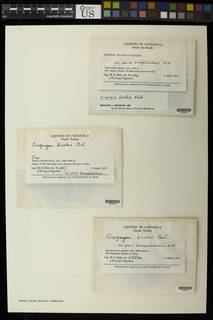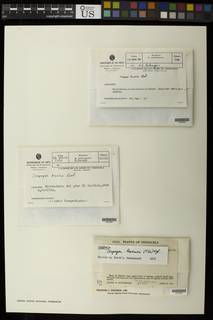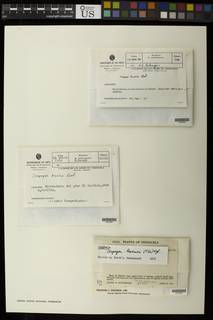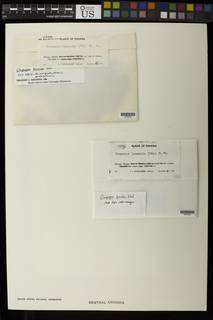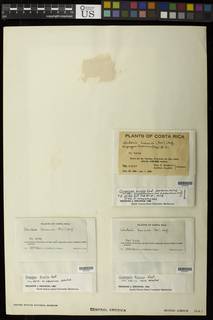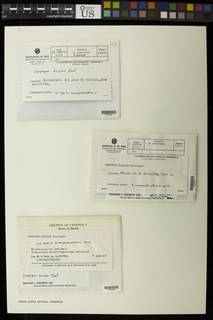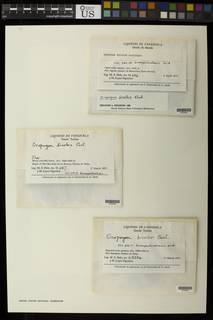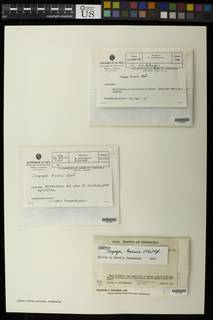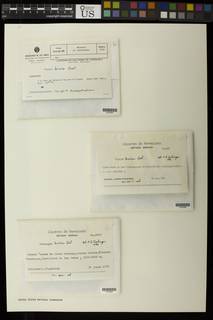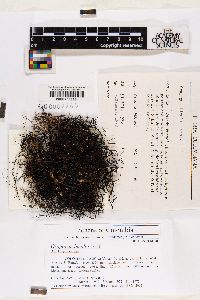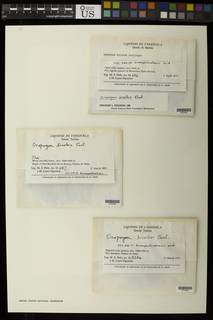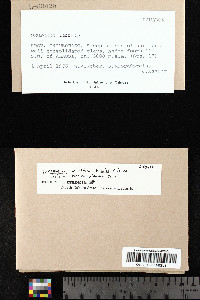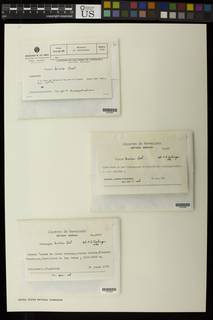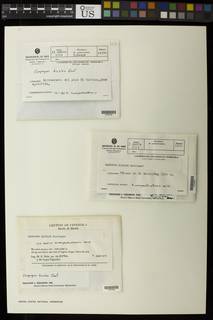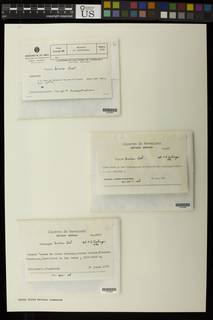
Consortium of Lichen Herbaria
- building a Global Consortium of Bryophytes and Lichens as keystones of cryptobiotic communities -
- Home
- Search
- Images
- Species Checklists
- US States: O-Z >
- US National Parks
- Central America
- South America
- US National Parks
- Southern Subpolar Region
|
|
|
|
Family: Parmeliaceae
|
Nash, T.H., Ryan, B.D., Gries, C., Bungartz, F., (eds.) 2002. Lichen Flora of the Greater Sonoran Desert Region. Vol 1. Thallus: caespitose, up to 12 cm long branching: isotomically dichotomous, internodes mostly 3-6 (-9) mm long branches: terete, main ones up to 1 mm diam., rarely with scattered lateral and terminal spinules surface: tan to brown or dark brown, with black areas that are usually more frequent and merging together in old parts, occasionally mostly black, smooth soredia: very rare, granular, associated with the pseudocyphellae; pseudocyphellae: usually frequent and conspicuous, open to the hollow thallus center medulla: white to dingy off-white, very rarely with yellow pigmented areas, granular, hollow and thin, often patchy in older parts Apothecia: not seen in Sonoran material, elsewhere infrequent, lateral, up to 4 mm diam.; margin: entire to weakly crenulate, sometimes eroded; disc: concave to plane or slightly convex; hymenium: 145-205 µm thick asci: clavate, 1-spored ascospores: ellipsoid, muriform, brown, 105-135 (150) x 30-42 µm Pycnidia: not seen Spot tests: cortex K-, C-, KC-, P-; medulla K- or K+ dingy orange, C-, KC- or KC+ faintly rose, P- or P+ orange Secondary metabolites: medulla with fumarprotocetraric acid (major to trace) and protocetraric acid (trace) and unknowns (trace or absent). Substrate and ecology: on pine bark in montane oak-pine forests World distribution: northern South America along the Andes to Bolivia, the Carribean and Central America to Mexico Sonoran distribution: only known from one locality in the Sierra Madre Occidental in southern Sinaloa. Notes: This species was initially published as Alectoria fusconitida, but that name is rejected as a nomen nudum. The mottled thallus surface, and the thin, hollow medulla distinguishes this species from all others, especially when fumarprotocetraric acid is present, giving the medulla a P+ orange reaction. This species sometimes lacks medullary substances, however, and is one of only two species known to do so (the other being the Venezuelan species O. byssaceus Essl., which has a loose, cottony, well-filled medulla, and can be readily distinguished from P- specimens of O. bicolor). Only one, rather sparse collection of this species was seen, very near the limit for inclusion in this work. |
Powered by Symbiota



